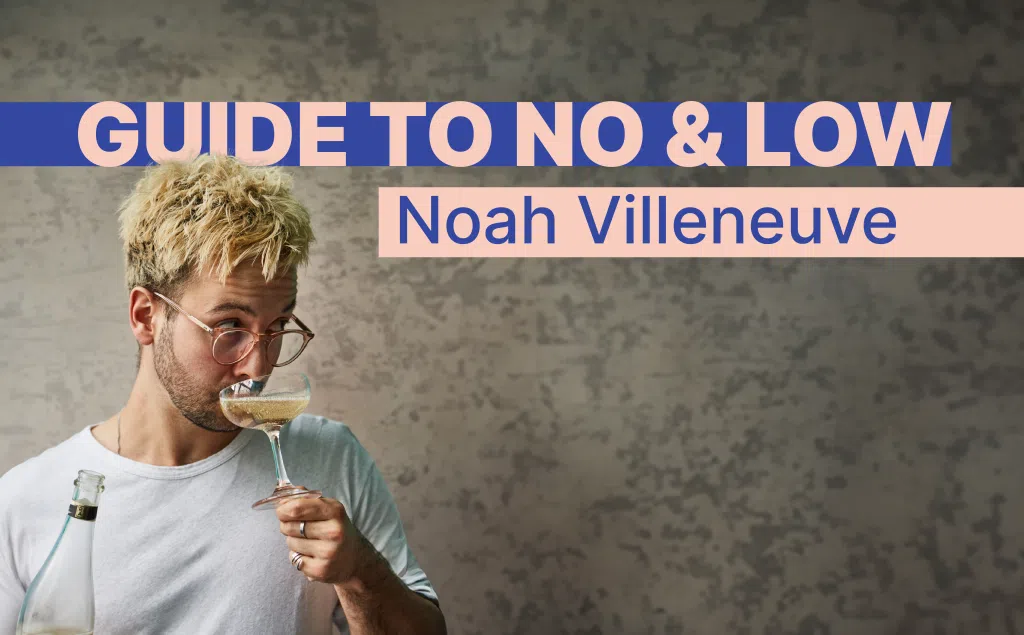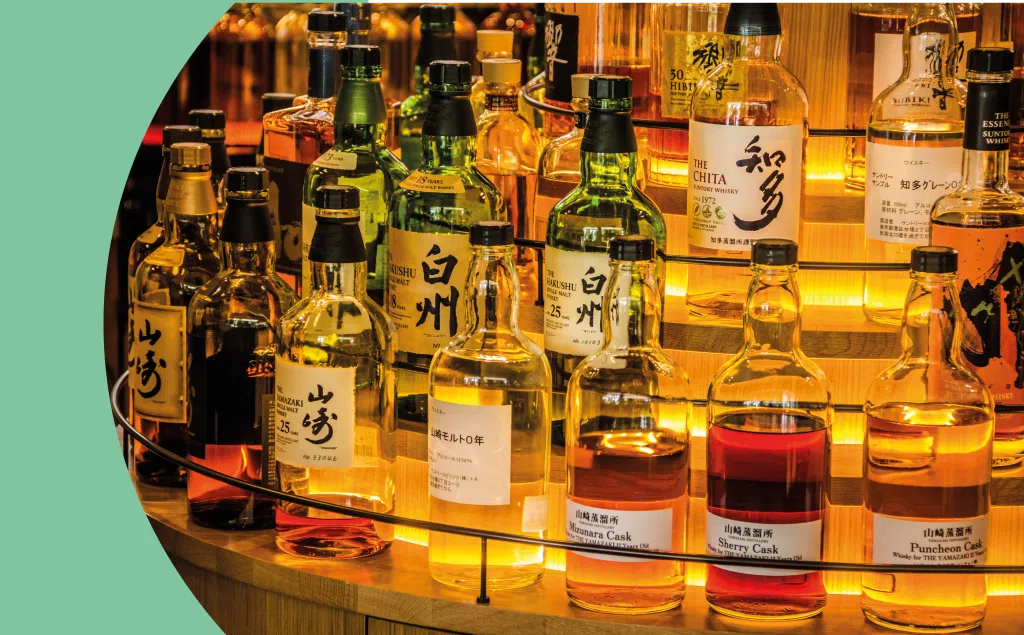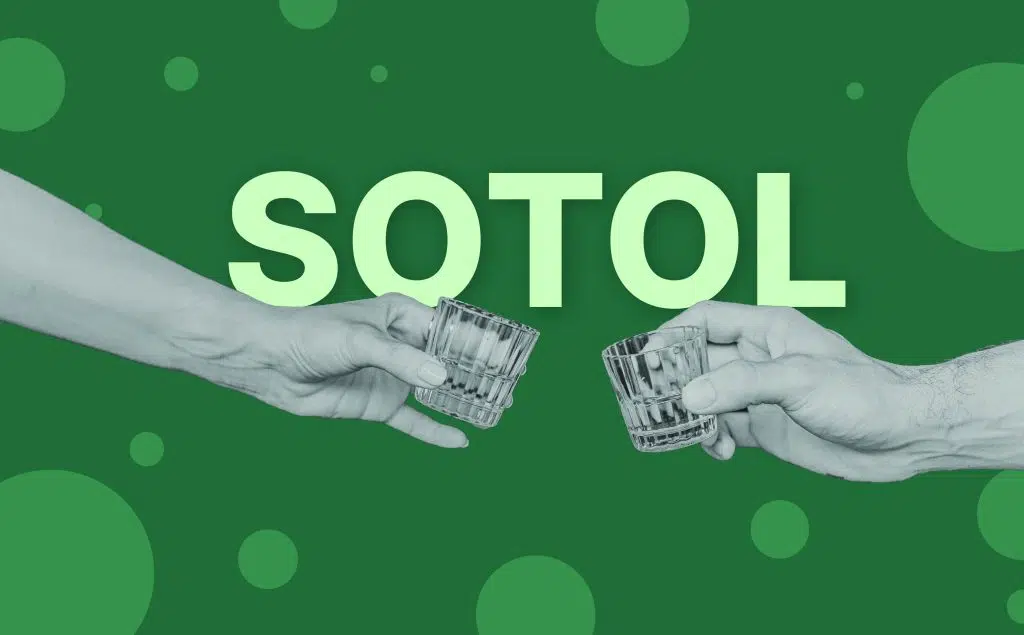Gone are the days of being limited to a Coca Cola, a warm J2O or a dusty bottle of Becks Blue from the back of the stock room. The wealth of options, innovation and versatility in 2024 for the non-drinking individual today (for whatever reason, be there numerous), is really something to behold.
The alcohol-free movement has blossomed in the last decade, but there is still a lot to unpack in terms of inclusivity, education and understanding of it.
In this interview, we sat down with Noah Villeneuve, a well-seasoned expert in the food and beverage industry, with over fourteen years as a bartender, restaurant manager, sommelier, drinks consultant and menu developer. Noah helped launch the UK’s first alcohol-free bar and shop in Covent Garden (Club Soda), and has been a judge on multiple panels, including the IWSC, Great Taste Awards, World Alcohol Free Awards, among his vast experiences.
Read on as he shares with us key insights into this steadily growing phenomenon:
What has sparked the rise in the No and Low movement?
There are numerous reasons that someone might want to modify their drinking behaviours, and there has been a noticeable shift in thinking around alcohol since the global pandemic.
We have seen the perfect storm of more products—of better quality—coming to market with wider availability, whether in bars and restaurants, or the local supermarket and off licence.
There are also economic factors, in that it can be extraordinarily expensive to drink, and consumers are feeling the pinch of their budgets and rise in costs of living.
Moderation and more mindful approaches to drinking have certainly also picked up some more ‘cool points’ in recent years, with a swathe of sober influencers and celebrities making some noise around their stance on drinking less and the negative effects of alcohol on their lives.
It’s hard to pinpoint one specific reason, but what is clear is that globally, drinks producers, entrepreneurs and manufacturers have acted on this change, understanding that we are social beings and still want to be out in bars and restaurants, but not necessarily imbibing alcohol.
Having something in our glass that provides a feeling of being included and tastes great too is of so much importance.
What terminology is in—or out—when it comes to No and Low?
There is much dialogue on the importance of terminology in this space and what feels suitable and conducive to the market and individual.
On a personal level, people may want to identify their drinking as “sober” or “sober curious”, “mindful” or “moderating”, “zero proof” or “alcohol free”. It’s important for people to feel comfortable in how they are labelling their drinking, or whether to label themselves at all.
Just as different dietary requirements are addressed, as long as the customer feels the restaurant and bar staff deals with their needs and wants in a safe, intelligent manner, then there isn’t necessarily a ‘right’ or ‘wrong’ way of using this terminology. 
A venue may want to use the word ‘mocktail’, but there are industry figures who suggest this comes across as offensive and makes a ‘mockery’ of the category. Some spaces use more approachable language whilst still being insightful with words like ‘alcohol-free”, ‘non-alcoholic’, ‘0% cocktails’ or even words like ‘placebo’ or ‘mimics’ have been known to do the trick.
Different parts of the world and different styles of venues will find what works best for them, but to help push things forward, it is important to not be overly judgmental of these terms.
For bars and bartenders, what are some key things to consider in light of this movement?
It’s important to remember that not everyone drinks like you. You may have your preferences, but it is imperative to provide options for every kind of customer—and that includes the one who isn’t drinking.
Find value in quality products, brands you can get excited about and inspire creativity in you to use in a variety of serve styles, and understand how they are made, their story and be able to talk about these liquids with passion in the same way you would with a new wine, liqueur, whiskey or IPA on your back bar.
Who are some key players (brands, voices, bartenders, etc) to look to for inspiration?
Right now I think some of the coolest movers and shakers in the no and low scene are Camille Vidal, Derek Brown, Karl Considine (Love From), Alex Jump / Joshua Gandee / LP O’Brien / Shannon Michelle @ Focus On Health, Jamie Osman & Tom Hollings (They Think Its All Sober Podcast), Millie Gooch (Sober Girl Society), Elizabeth Gascoigne at Absence Of Proof, Denise Hamilton-Mace (Low No Drinker Magazine), Aqxyl and Juan at Minus Moonshine, Sam at Third Place Bar.
And, of course, the godfather of the non-alcoholic category Ben Branson (Seedlip/Seasn).
The list could go on, and this is without even approaching the incredible amount of creative and supportive bartenders, managers, sommeliers and chefs of the scene, which could be a whole dedicated separate article. There is an immense amount of inspiration in the no and low world right now, just look at any of the above names to find that in droves!
What should a consumer consider when it comes to pricing of non-alcoholic drinks compared to the cost of alcoholic ones, which can often be similar in price?
It can be alarming to the consumer, as if they might feel cheated to be paying the same price for a non-alcoholic cocktail as its boozier counterpart—which is understandable.
However, there are many factors that contribute to production costs of an alcohol-free product, and it doesn’t always result in being cheaper.
Unless you are buying from the major alcohol corporations offering their 0% options, you are often purchasing from a brand that is independent, a start up, an extremely small team, working with a very tight budget. There can be expensive overheads, pricey production costs, high-priced quality ingredients, and innovative techniques that take time to create the final result.
This means that bars and restaurants purchase those bottles for a set price, which means that in order for them to make a profit, they must price it accordingly on their menu, which may be more expensive than the customer perceives to be understandable.
There is a wider understanding of this process now, and many people are willing to pay the price tag that comes with this inclusivity. Perhaps with time, and technology advancements and more brands growing, we will see these prices drop slightly.
But for now, it is important for customers to understand why they might have to pay these price tags for non-alcoholic cocktails and other zero-proof beverages.
Do you see this more as a trend or a “here to stay” phenomenon?
We’ve seen people calling the increased interest in alcohol free products a “fad” or a “passing trend”, but the reality is that it is here to stay and is not going anywhere.
Year upon year, the growth is immense and more people are wanting to find alternatives to alcohol. The younger generations are drinking less alcohol and there are less expectations and peer pressures. Alcohol-free options provide added value and increased spend per head and profit for venues, and provide the customer something more exciting than a boring room temperature juice with grenadine.
There will always be a reason for people wanting an alcohol free option and we’re now existing in a space where there is something for everyone to enjoy, no matter what your tastes or ABV preferences.











